In 1948, John Steinbeck and photographer Robert Capa published A Russian Journal, one of the earliest attempts to chronicle everyday Soviet life for an American audience. The book featured rhapsodic, lyrical descriptions of the Russian countryside; happy peasants toiling away on collective farms in Ukraine and the Caucasus; and measured depictions of the bleak realities facing government clerks, intellectuals, and factory workers in the cities. “One spends no moment except under the smiling, or pensive, or stern eye of Stalin,” Steinbeck wrote. “It is one of those things an American is incapable of understanding emotionally.”
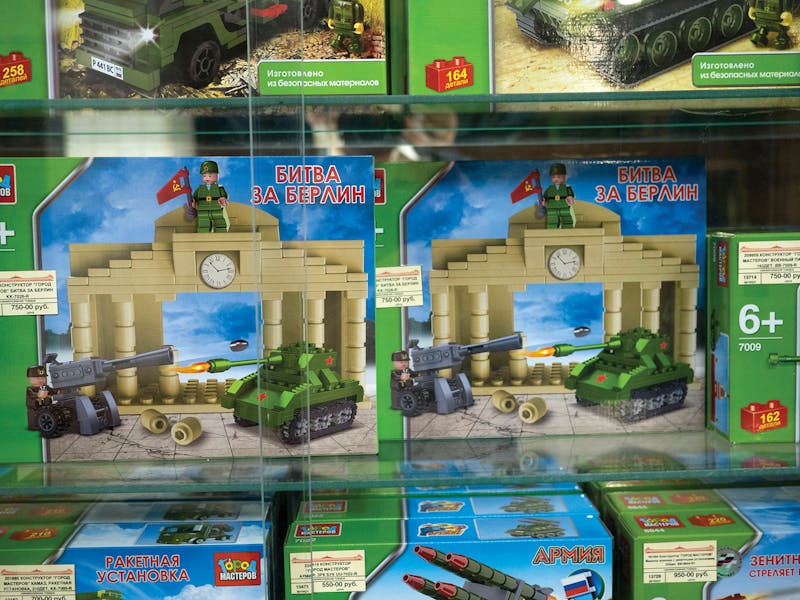
Last summer, journalist Julius Strauss and photographer Thomas Dworzak retraced Steinbeck and Capa’s steps through Eastern Europe. In many ways, Russia looks very different today. But as the country has returned to some of the militaristic nationalist tendencies of the Soviet era, aspects of everyday life recall what Steinbeck and Capa saw 70 years ago. Under Vladimir Putin, the Kremlin has erected new museums glorifying the Soviet past and staged elaborate military parades that hearken back to the days of the czars. Russian officials rant about the West’s effete worldview, its duplicity and aggression.
In a World War II memorial museum in Moscow, Dworzak and Strauss stumbled across this knockoff Lego set for sale in the gift shop. “The Battle for Berlin,” reads the packaging. It’s one of the ways Russian children are taught about the glory days of the Soviet Union. “A new war is already underway,” Strauss says, “a struggle that pits Putin’s Kremlin, the Russian Orthodox Church, and the revamped Red Army against those who believe in NATO, the European ideal, and Western liberal values.”
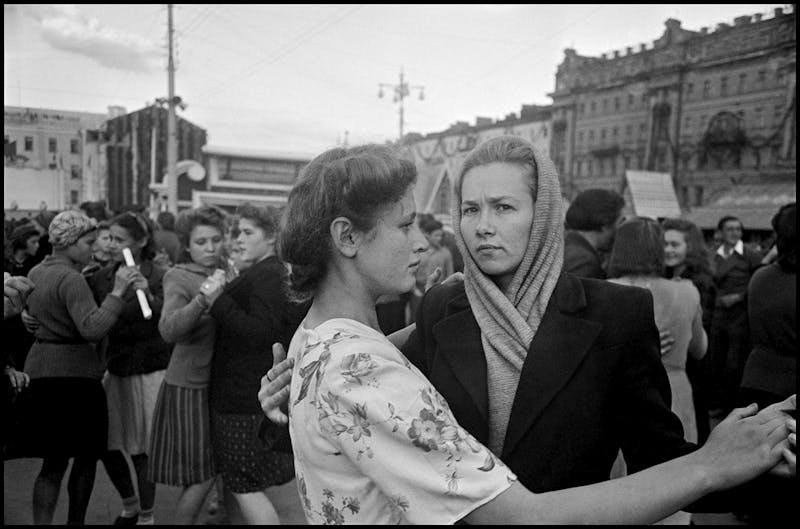
1947: Women dance in a public square in Moscow.
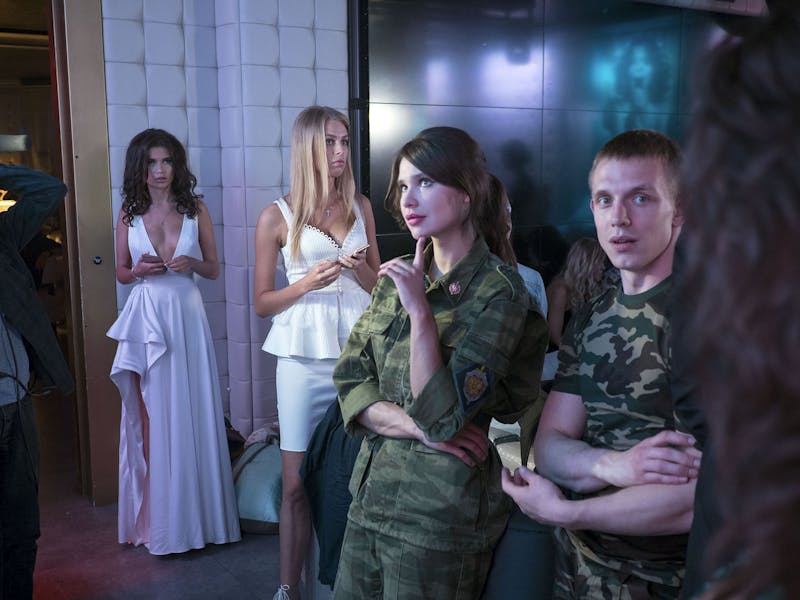
2017: Miss Moscow contestants wait behind stage before the winners are announced. The woman in camouflage, a graduate of the FSB academy, insisted on appearing in uniform.
1947: Women sit in Moscow’s Red Square. Under Soviet rule, the square was the main venue the Kremlin used to showcase its military might, staging massive state parades and marches through the center of the city. In fact, Stalin’s city planners once proposed demolishing Saint Basil’s Cathedral—the building in the background of this photo—to make way for more elaborate military parades.
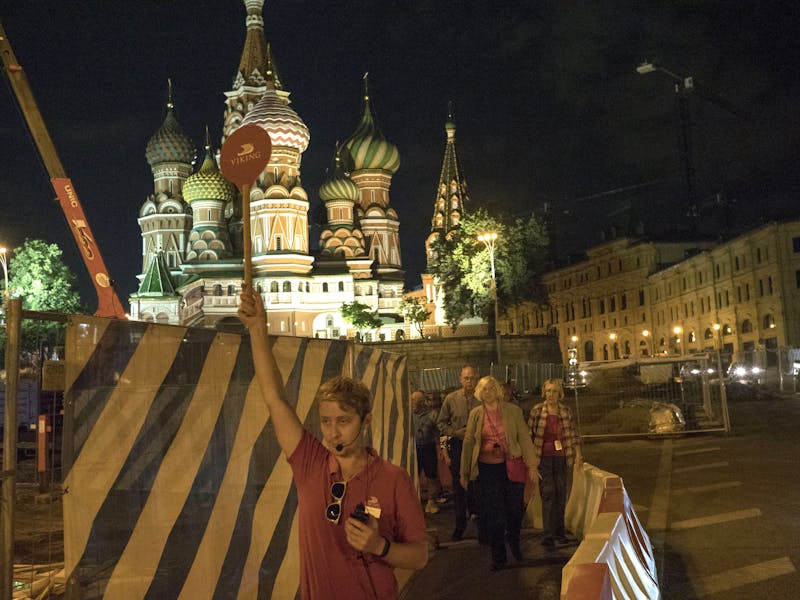
2017: German tourists walk through Red Square.

1947: An audience watches a circus performance in Kiev, Ukraine. Between 1903 and 1941, Kiev had the largest circus in Europe.
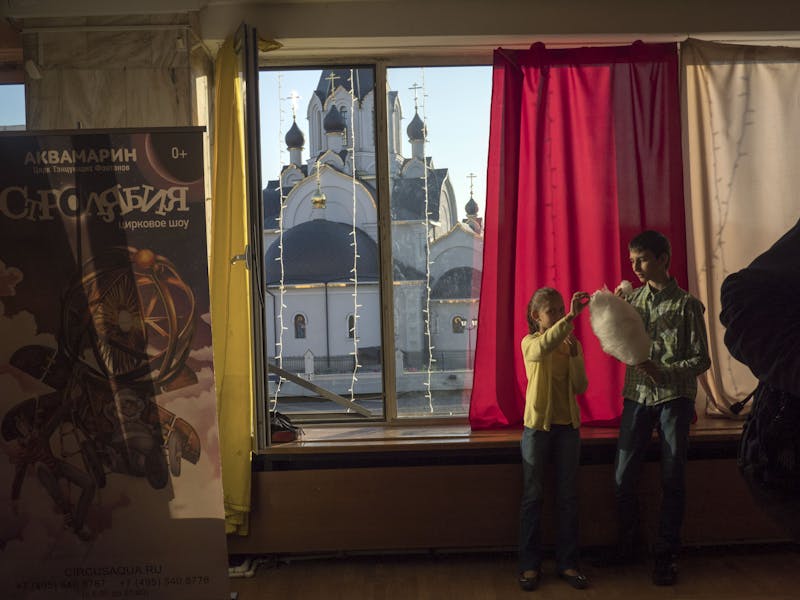
2017: Circus performances are now held in Moscow’s Dubrovka Theatre, where Chechen militants took theatergoers hostage in 2002, killing 130.
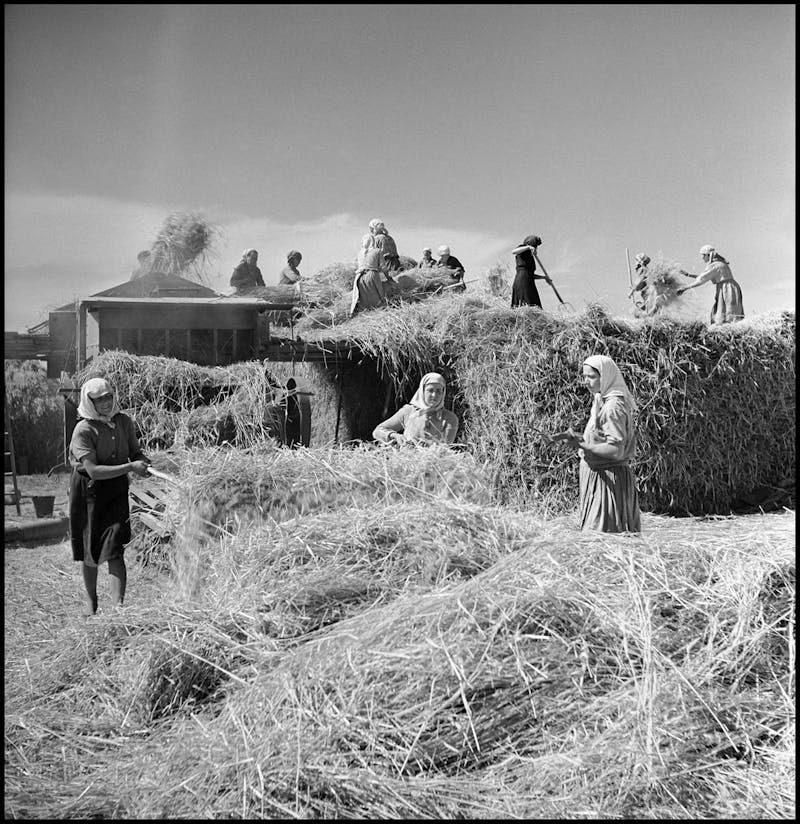
1947: Peasants reap wheat on the Shevchenko collective farm in Ukraine. Stalin introduced collectivization during the late 1920s in a plan to free Russian peasants from centuries of forced labor as serfs working under wealthy landowners and later, kulaks.

2017: Pedestrians walk past Moscow’s Central Post Office as it undergoes renovations.
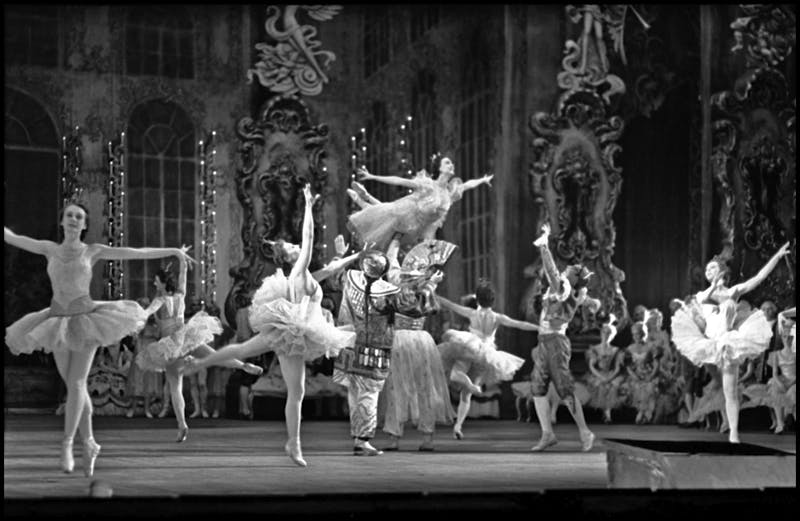
1947: The Bolshoi Ballet performs in Moscow.
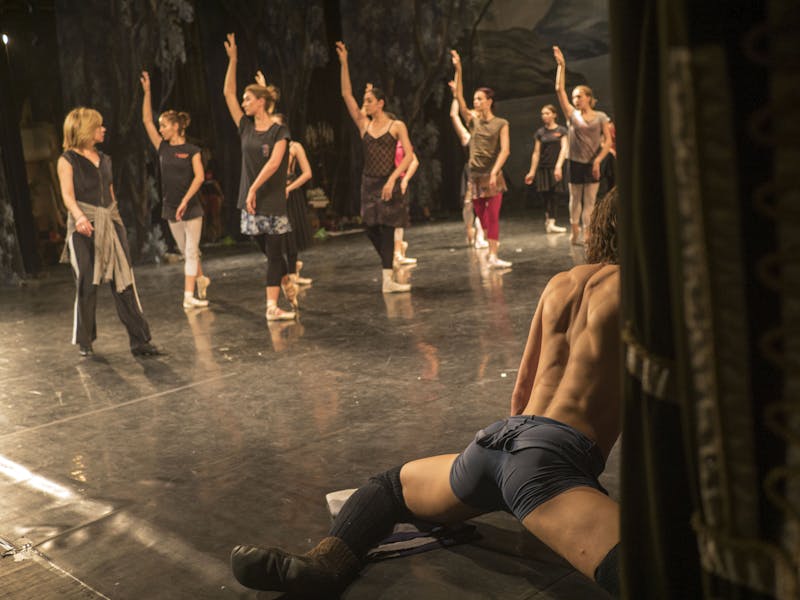
2017: Members of the Moscow Youth Theatre rehearse Swan Lake, the Tchaikovsky ballet based, according to some Russian scholars, on traditional Russian and Slavic folk tales.
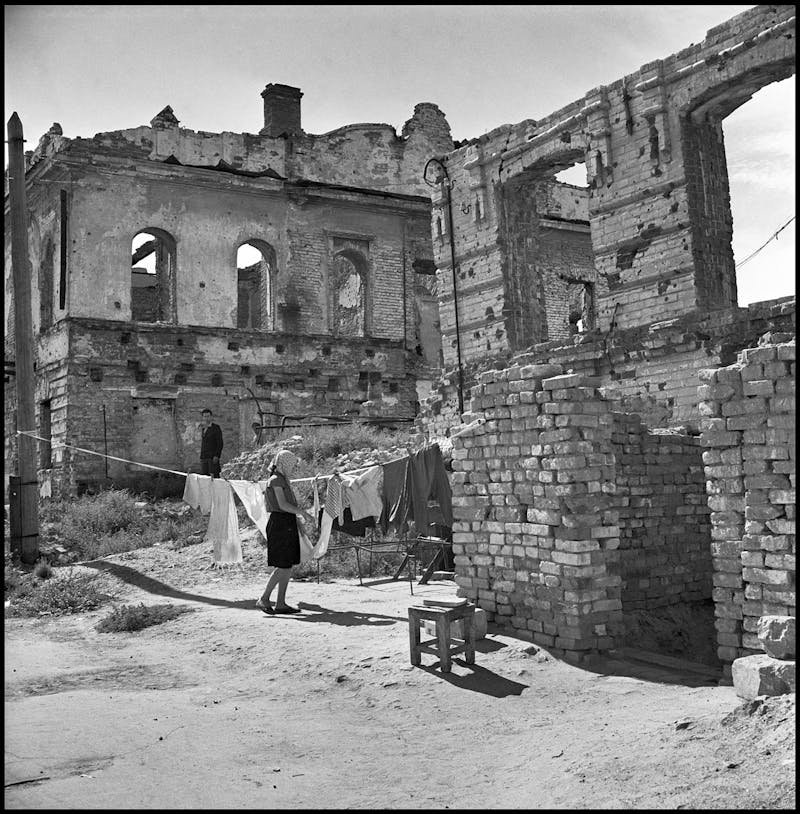
1947: Stalingrad was hollowed out by Luftwaffe bombing during World War II. By the time Capa and Steinbeck reached the city, two years after Germany had surrendered, Stalingrad, which had been an important Russian industrial power before the war, was still in ruins.
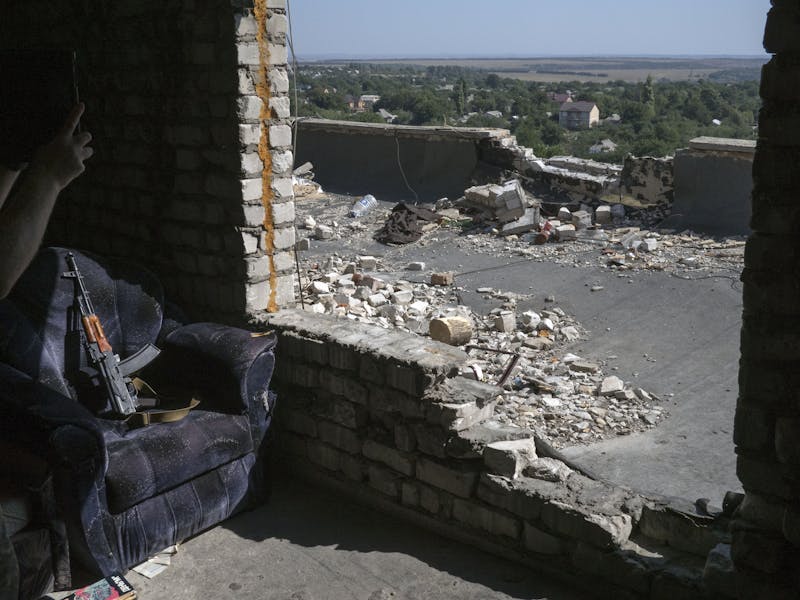
2017: The Ukrainian army holes up in this bombed out structure overlooking the frontline in Donbass, a region in eastern Ukraine that shares a border with Russia. Russian separatists had been battling the Ukrainian army there since hostilities broke out in March 2014.
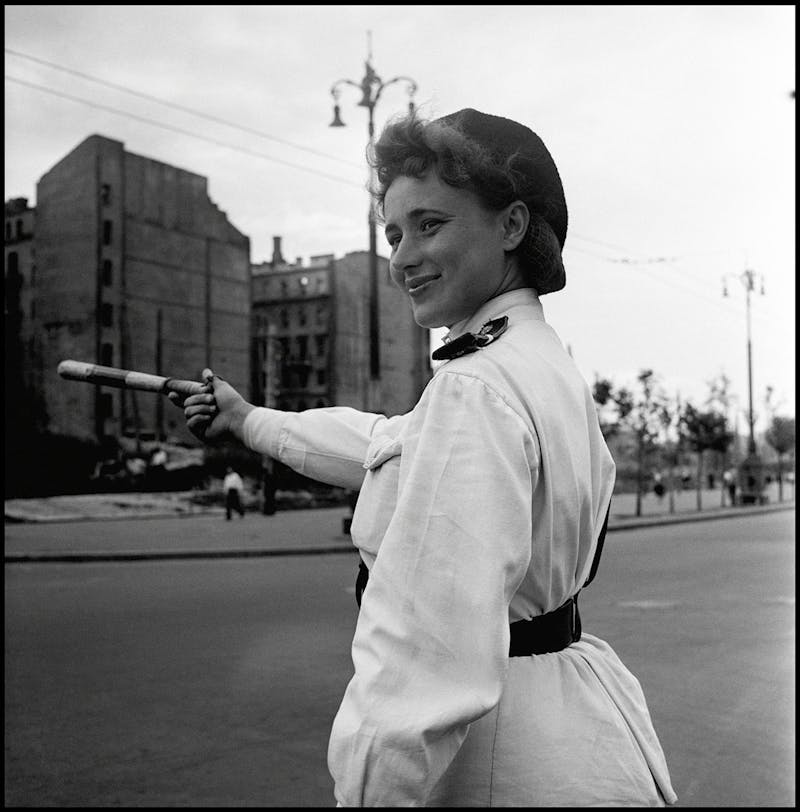
1947: A woman directs traffic in Kiev, Ukraine.
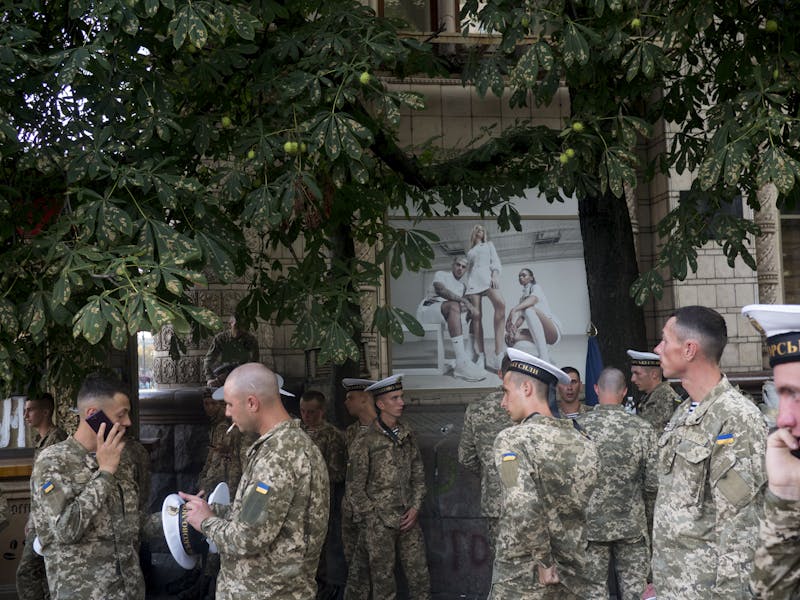
2017: Soldiers rehearse for a parade to celebrate Ukrainian Independence Day on August 24, the date that the Ukrainian parliament issued a declaration of independence from the crumbling Soviet regime in 1991.
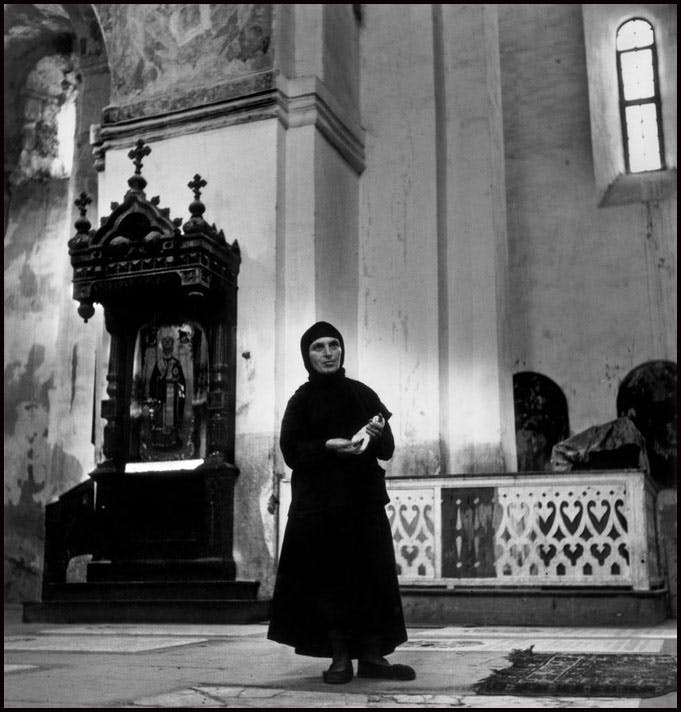
1947: A secular nun stands in the nave of Jvari, a Georgian Orthodox monastery built in the sixth century in the mountains overlooking the ancient city of Mtskheta, the birthplace of Christianity in Georgia.
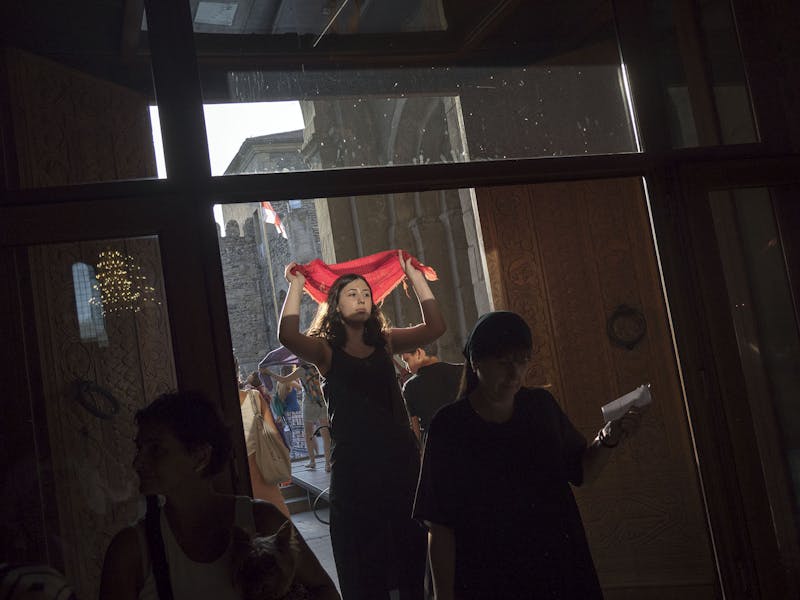
2017: A young girl covers her hair as she enters the Svetitskhoveli Cathedral in Mtskheta, Georgia. Today, roughly 83 percent of Georgian citizens belong to the Eastern Orthodox Church.
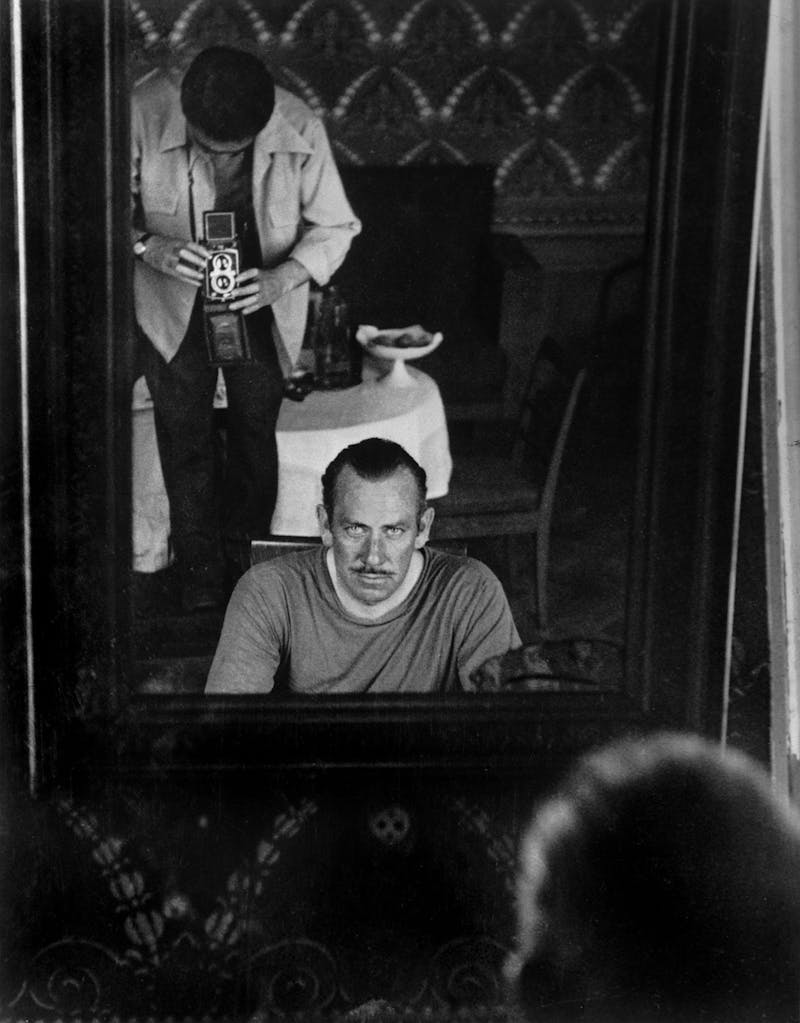
1947: Robert Capa focuses his lens on John Steinbeck while the two were in Moscow. Published the following year, their Russian Journal was critically acclaimed in the United States.
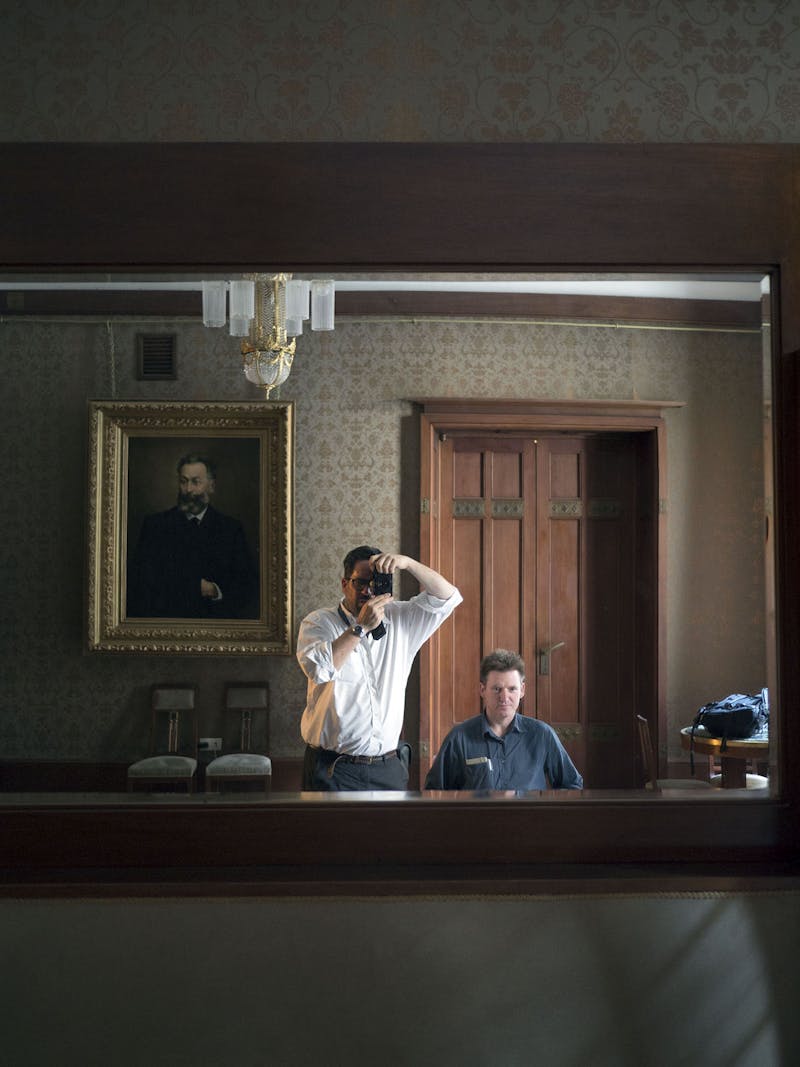
2017: Thomas Dworzak recreates Capa’s 1947 photograph of Steinbeck with Julius Strauss in the Writer’s House of Georgia in Tbilisi.
